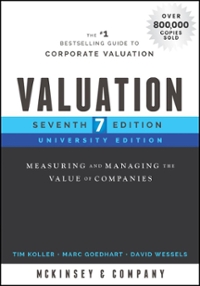Question A3 Venture Company and Pioneer Company are competitors within the same industry. Their financial statements are listed as follows: Balance sheet as at Dec 31" 2019 Venture Pioneer Current assets Cash 22,900 35.400 Accounts receivable 38,100 47,200 Inventories 70,200 39.200 Total current assets 131,200 121,800 Fixed assets (net) 1,057,600 1.287,000 Total assets 1.188.800 1.408.800 Current Liabilities 92.700 68,400 Long-term liabilities 782.900 787.800 Total liabilities 875,600 856,200 Stockholders' equity Common stock 40,000 300.000 Retained earnings 273.200 252.600 Total stockholders' equity 313.200 552.600 Total liabilities and stockholders' equity 1.188.800 1.408.800 Income Statement for the year ending Dec 31" 2019 Venture Pioneer Net sales 1,507.900 1,990,000 Cost of goods sold (301,580) (417.900) Operating expenses (952.820) (1.272.100) Income before interest and tax 253,500 300,000 Interest (84,000) (90,000) Income tax (74.500) (81.000) Net income 95.000 129.000 Additional information for year ending 2019 Venture Pioneer Number of common shares outstanding 40,000 30.000 Question A3 (continued) Required: (a) Compute the following missing ratios for each company. Present your answers by copying the table below onto your answer sheet. Express your final answers correct to two decimal places (while taking full decimal places for all the middle steps). (15 marks) Venture Pioneer Liquidity: Current Ratio 1.78 Quick Ratio 0.66 Assets efficiency: Inventory Turnover 10.66 Days' Sales in Receivables Total Asset Turnover Financing Equity Multiplier Times Interest Earned Operating profitability: Profit Margin (%) 6.30% 6.48% Return on Assets (%) Return on Equity (%) (b) For each of the two companies, give brief comments (within 30 words) on their liquidity performance. (2 marks) (C) For each of the two companies, give brief comments (within 70 words) on their assets management efficiency. (3 marks) (d) For each of the two companies, give brief comments (within 100 words) on their financing capital structure (4 marks) (e) For each of the two companies, give brief comments (within 50 words) on their profitability performance. (2 marks) (6) Compute the return on equity (ROE) of both companies using the Du Pont Identity formula. Explain the difference in ROE between the two companies and advise which company has a better retum on its equity (ROE) and which company will be more likely to incur a higher financial risk (within 150 words). (7 marks) (g) Which of the two companies, as judged by all the above analysis, would you choose to invest? Explain briefly (within 50 words). (2 marks)








